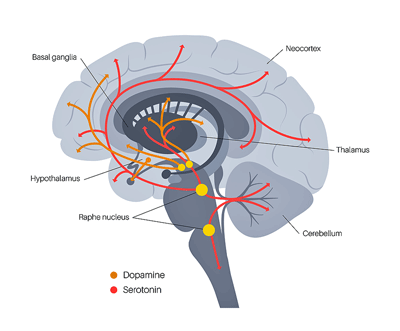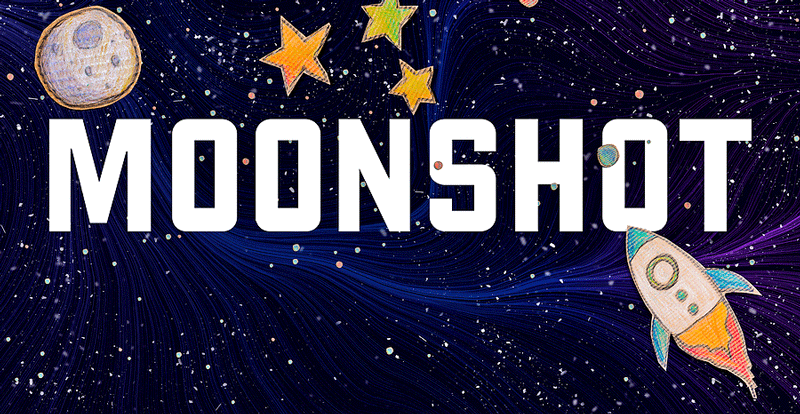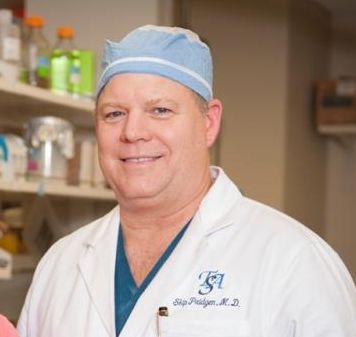


Check out ME/CFS and FM treatment studies that ended up.
Clinical Trials Ending This Year or Late Last Year
The coronavirus pandemic stopped everything for quite a while but the clinical trials which survived the pandemic probably started up again quite some time ago. All we have to go by, though, are the stated completion times listed in the https://www.clinicaltrials.gov/ database which provides information on clinical trials in over 200 countries. That said, check out the clinical trials for ME/CFS and fibromyalgia that were projected to end in the last half of last year or this year. (A few trials not listed for ME/CFS are included as well.)
Plus check out possible game-changers: trials big enough to quickly lead to FDA approval or to quickly produce follow-up trials for FDA approval, or which could lead the medical profession to adopt new treatment options. These trials are highlighted.
Chronic Fatigue Syndrome (ME/CFS)
*Possible Game Changer – Pyridostigmine bromide (Mestinon)
This 50-person, placebo-controlled, double-blinded study by David Systrom was projected to have been completed last year. This is a trial which, because it’s employing a readily available and well-known drug could, if successful, rather quickly produce significant results for the ME/CFS community.
Systrom believes Mestinon may be causing the veins in a subset of ME/CFS/FM patients to narrow, thus propelling blood back up to the heart and providing the muscles, brain, etc. with the blood they’ve been missing. Retrospective studies suggest Mestinon may be able to improve oxygen uptake, end-tidal carbon dioxide levels, and ventilatory efficiency.
This study is going to do more than assess symptom responses, though. It will, using Systrom’s blood tests and his invasive exercise equipment, measure lactate levels, oxygen uptake by the muscles, output from the heart, heart rate, carbon dioxide production and 7 more cardiovascular factors.
Furthermore, the study was extended by a 2020 CDMRP grant to Dr. Rosa Maria Pari Ñaña to identify which patients will likely benefit from Mestinon..The study isn’t large enough to produce FDA approval but a positive result should certainly help doctors try this old drug in their ME/CFS patients.
Oral Rehydration/Saline – (this study may have already been completed). A recent oral rehydration study found that off-the-shelf oral rehydration salts were as effective as saline IVs in ME/CFS and POTS.
Solriamfetol – a most interesting narcolepsy drug is being trialed in ME/CFS. One doctor told me that in his experience people with ME/CFS have a sleep-wake instability similar to narcolepsy and that he, himself, responded very well to a drug (sodium oxybate) prescribed for narcolepsy.

Solriamfetol increases dopamine (but not serotonin) availability in the brain.
Solriamfetol is a norepinephrine–dopamine reuptake inhibitor (NDRI) that increases the availability of dopamine and norepinephrine. It was FDA-approved recently (March 2019) for treating excessive sleepiness in narcolepsy and residual sleepiness in people with obstructive sleep apnea. It’s believed to be safer than traditional stimulants. It’s interesting that the leader of this study, Joel Young MD, so quickly jumped on the opportunity to test this new drug. Young is a psychiatrist who firmly believes ME/CFS is a physical illness, has written a book on it, and employs an interesting treatment approach that includes both long-acting stimulants and meditation. (!).
- VIRTUAL SFCAMINA – combines a multicomponent approach based on Pain Neuroscience Education (PNE), therapeutic exercise, Cognitive Behavioral Therapy (CBT), and Mindfulness training.
- Yan Nian Jiu Zhuan Fa – Chinese massage and behavioral approach
ME/CFS Trials Not in the Clinical Trials Database
Nancy Klimas’s “Moonshot Trial”

Dr, Klimas’s “Moonshot” study is attempting to reset ME/CFS patient’s systems and return them to normal.
Called by Nancy Klimas her “moonshot trial” – as in she’s reaching for the moon – this trial is attempting to reset and return ME/CFS patients’ system back to normal. This etanercept/mifepristone trial was based on extensive computer modeling which was then validated in a Gulf War Illness (GWI) mouse model. (A GWI trial has been underway as well.)
This trial is particularly intriguing as Dr. Klimas’s research indicates that GIWI and ME/CFS are quite different diseases but her modeling work suggests this drug combination – etanercept administered earlier to combat neuroinflammation and mifepristone later to reset the HPA – should work in both illnesses.
This trial was fully (privately) funded and was about to start when the pandemic hit. Dr. Klimas reported last spring that the trial was “back in the saddle”. No telling when it was supposed to wind up but as it was a small study 2022 seemed likely.
This trial certainly has the potential to be a “game-changer” but my guess is that it’s probably too small for many doctors to take on trying these drugs.
Repetitive Transcranial Magnetic Stimulation – this small but innovative pilot UCLA trial is going to stimulate two parts of the brain (limbic system/prefrontal cortex) simultaneously. Funded by the Solve ME Initiative in the first part of 2021 was reportedly going to get underway quickly, and could if it wasn’t thwarted by the pandemic, have results shortly
Suramin Trial – Bob Naviaux – It’s been reported that this trial has been funded and will begin this year. Ron Davis has expressed hope that it will provide some answers.
Inspiratory Muscle Training – I’m not sure when this small study funded by Solve ME will end up, but its a good one to keep an eye on given all the breathing problems found in ME/CFS.
Fibromyalgia
Drugs
A Ketamine Revolution?
Formerly used as an anesthetic drug, ketamine has produced some eye-opening results in both depression and pain. Two fibromyalgia studies are underway or have recently started:
*Possible Game-Changer – ESKETamine for FIBromyalgia Treatment (ESKEFIB)
This big 210-person Belgium study certainly seems to have the heft to change things in Europe. The U.S. is another matter but a win here would surely entice U.S. firms to take a look.
- Comparison of Ketamine and Esketamine (KESK-FIQ) – this is a smaller U.S. study.
Learn much more about ketamine and fibromyalgia here
*Possible Game-Changer Fibromyalgia Outcome Research Trial Evaluating Synergistic Suppression of HSV-1 (FORTRESS)
Dr. Pridgen Does It!

Congratulations to Dr. Pridgen for persevering and potentially bringing a new therapy and new understanding of fibromyalgia to the fore.
However, it turns out it’s been gratifying to see Dr. Pridgen’s work over the past 10 years pay off in this big 460-person, multicenter, antiviral trial. It’s slated to end in June of this year. The fact that Pridgen was able to get an antiviral trial underway in a disease that’s never shown the slightest interest in pathogens is astonishing in itself. This is one of the big FM trials which, if successful, could ultimately result in FDA approval – and a dramatic reassessment of the disease itself.
Check out a rather astonishing recovery story.
A Study to Evaluate Lu AG06466 in Participants with Fibromyalgia – this intriguing drug inhibits the enzyme that breaks down endocannabinoids – thus making this feel-good compound more available. An inhibition of the body’s own cannabinoid production has been proposed for FM. The drug may also reduce neuroinflammation. (An endogenous opioid assessment study is also underway in FM.)
Learn more about endocannabinoids and FM here:
The Effect of Minocycline and N-acetylcysteine for the Treatment of Fibromyalgia Minocycline has stirred interest as a possible anti-neuroinflammatory and NAC is a potent antioxidant that can make it to the brain. Some evidence suggests that using them together may produce synergistic effects. Shungu’s preliminary NAC findings in ME/CFS were promising and a NAC treatment trial is underway in ME/CFS.
Possible Game Changer – Efficacy and Safety of NYX-2925 in Subjects With Fibromyalgia
This and Pridgen’s trial may be the trials to watch out for. This big Phase II trial, if successful, would quickly be followed by a Phase III trial, setting up this drug for FDA approval. NYX-2925 by Aptinyx is notable in that it could help with both sleep and pain in FM. The trial was projected to end in June 2022.
Symptom improvements by this drug have been correlated with reductions in the excitatory and sometimes neurotoxic compound glutamate in two key pain processing areas in the brain (insula, anterior cingulate). (Studies have highlighted those brain areas in ME/CFS as well.) NYX-2925 is also intriguing in that it apparently provides a kind of neuroplastic boost by enhancing synaptic plasticity.
Aptinyx, its manufacturer, appears to be quite high on the drug and expects it to be helpful in other chronic pain conditions characterized by central sensitization. (That would, of course, include ME/CFS).
It’s been over ten years since the last drug was FDA approved for FM. Hopefully, Aptinyx breaks the string of bad luck visited upon several recent major efforts (Mirogabalin, TNX-102) to bring a new drug to market for FM. Speaking of bad luck…
*Possible Game Changer – Will Tonix TNX 102’s Rough, Rough, Ride End Well?
This drug is down right now but this drug has been down before and could emerge to be a game-changer. It’s had lots of study in lots of FM patients and a good result could put it over the top.

We should know soon if there’s a path forward for Tonix’s TNX-102 SL in fibromyalgia.
That said, no potential FM drug has had a more rollercoaster journey than Tonix’s TNX-102 SL drug. Excited to add a sleep and pain improving drug to the FM drug basket, Tonix started TNX-102’s phase III trial in FM before it’s phase II trial had ended.
That trial didn’t make its endpoints (wiping out $70 million in stock valuations) but then after the drug worked in PTSD at a higher dose, the company re-evaluated its data and began another larger phase III drug trial only to suspend it mid-trial in July of last year after an interim analysis suggested that it would make not make its primary endpoints.
Then in November, the company reported positive results from the truncated FM trial stating that it did meet its primary endpoint (reducing daily pain) and showed “activity” with regard to improved sleep, reduced fatigue and functionality.
Tonix doesn’t know what to do regarding their flagship drug right now. Two similar studies have produced different results and they don’t know why. They expect to have the analysis done sometime early this year. Meanwhile, one media outlet reported another Phase III trial – the third one for this drug (!) is expected this year.
The company reported it was considering tryingTNX-102 out in long COVID.
Anti-CGRP Drugs
It’s really good to see anti-CGRP based drugs developed to treat migraines – a common comorbid condition in both FM and ME/CFS – get a shot at fibromyalgia as well. Check out a story of an FM patient who found that both her migraines and FM got better on one of these drugs.
*Possible Game Changer –A Study to Test the Effectiveness and Safety of Fremanezumab on Patients With Fibromyalgia -.
The size of this trial (220 patients) indicates that its drug manufacturer (Teva) has high hopes for this drug. While it’s not clear that this one trial would be enough for drug approval a positive result would mean a quick turnaround trial plus it would surely encourage other anti-CGRP drug companies to quickly jump into the lucrative fibromyalgia drug market. This project was expected to end in March 2022.
- Anti-CGRP for Inflammation and Pain Modulation in Small Fiber Neuropathy/Fibromyalgia – small study using Galcanezumab
Other Drugs
- Pyridostigmine bromide (Mestinon) – this study by David Systrom was projected to have been completed last year (see ME/CFS section)
Magnetic Stimulation of the Brain
The rapidly evolving magnetic stimulation field holds the promise of safely and effectively turning down overactive parts of the brain involved in pain processing and/or ramping up parts of the brain involved in executive functioning
- Repetitive Transcranial Magnetic Stimulation of Relief of Fibromyalgia Pain (TMSFFI) – due to end late last year
- Montage of HTDCS in Psycho-cognitive Functions in FM (HFTDCS)– home based anodic transcranial direct current stimulation (tDCS) trial
- Effect of Hypnosis Combined With Tdcs on Pain Perception and Cortical Excitability in Fibromyalgia – hypnosis + transcranial direct-current stimulation…Interesting!
Supplements
PEA (palmitoylethanolamide) – It’s great to see this anti-inflammatory and neuroprotective product being trialed in FM. PEA is a natural substance that’s produced on demand in areas of local inflammation. It appears to be able to tamp down inflammation and microglial and mast cell activation.
PEA has been described as a case study of the medical research establishment ignoring possibly effective treatments that it doesn’t understand. It apparently took a Nobel Laureate to spark interest in the drug.
Many European studies have apparently assessed PEA’s effectiveness in pain but this is the first FM study that I know of to do so. Find out more about PEA.
- Micronized and Ultramicronized Palmitoylethanolamide in Fibromyalgia Patients – The 60 person Italian study was projected to end up last year.
- Effect of an Amino-Acid-Based Blend on Human Growth Hormone (hGH) and Fibromyalgia (FM) Symptoms – 100-person study.
- Treatment of Fibromyalgia and CFS With Ribose, Ashwagandha, Rhodiola, Licorice, Schisandra and Green Tea Extract – projected to end summer of last year.
Physio and Heat Therapy
Dr. Ginerva Liptan has said that massage is amongst the most effective treatments for her patients.
- Bowen Therapy for Pain Management in FM – Bowen Therapy uses specific sequences of gentle cross-fiber moves over muscles, tendons, ligaments, and fascia to stimulate or improve the flow of blood and lymph, and thus activate the body’s healing mechanisms that enhances tissue repair. As a result, it can lessen pain and tension, restore more optimal body function, and subsequently alleviate emotional and psychological stress associated with the pain. Would this be helpful for the muscoskeletal problems Dr. Rowe finds in ME/CFS?
- Effects of Mobilization and Perceptive Rehabilitation on Patients with Fibromyalgia Syndrome (“the Cone Trial”) – the tool consisted of cones made from a latex material which were placed under the patient’s back during treatment sessions. These cones were intended to improve tactile response and proprioception, the so-called perceptual surface.
- Effectiveness of Manual Lymphatic Drainage in Patients With Fibromyalgia (EMLDIPWF) – projected to have ended last year. Check out a video on lymphatic drainage.
- Kinesio Taping and Inhibitory Treatment Techniques – is “a therapeutic taping technique which alleviates pain and facilitates lymphatic drainage by microscopically lifting the skin. This lifting affect forms convolutions in the skin increasing interstitial space and allowing for decreased inflammation in the affected area”
- Heat Therapy for Fibromyalgia – involves getting dunked in hot water
- POLD manual physiotherapy

Creative attempts to non-invasively alter brain functioning are underway
Alternative Treatments
Coordinated pulses of light, wearable brain-sensing devices, photomodulation, etc. – it was surprising to see the creative attempts underway that seek to gently alter brain functioning in FM.
- Efficacy of Sana Treatment in Fibromyalgia – Sana is a mask that provides coordinated pulses of light (through closed eyelids) and sound at various frequencies. Interesting! Projected to have ended in Sept. of last year.
- Remote Gamified Sensory Perceptual Training for Patients with Fibromyalgia: a Feasibility Trial – includes a smartphone app and two vibrational devices.This study was projected to have ended last year
- Evaluating Mindfulness-Based Interventions with New Fibromyalgia Patients – combining a “wearable brain-sensing device” and mindfulness training.
- Effects of Photobiomodulation in a Population Suffering from Fibromyalgia – uses red and near-infrared light to penetrate through the skull and into the brain cells. Believed to increase brain blood flows, mental clarity, energy.
- Acupuncture for Fibromyalgia Syndrome
- Auriculotherapy Treatment in Fibromyalgia (Fib-Auric) – needling points in the ear
- Comparison of Focused ESWT by Frequency for Patients with Myofascial Pain Syndrome- extracorporeal shockwave therapy
Behavioral
- Except for the big iCBT study all these studies hail from Europe (Spain, Turkey) or Israel
- Efficacy of Psychological Therapy in Chronic Pain and Fibromyalgia (DOLORTRATPSI)
- Group psychotherapy
- An Emotional Regulation Brief Procedure (PbRE) for Fibromyalgia Using ICT’s (PbRE
- Pain Neuroscience Education in Patients With Fibromyalgia
- Effectiveness Pain Neuroscience Education In The Executive Functions In Patients With Fibromyalgia (PNE)
- Impact of Post-Traumatic Stress Disorder Treatment by Reconsolidation Therapy on Fibromyalgia Syndrome (PTSD-FMS) – people with FM and PTSD take propanolol and then engage in reconsolidation blockade therapy.
- Sleep and Pain Interventions in Women With Fibromyalgia (SPIN-II) – huge 1300 person NIH funded iCBT/ sleep hygiene in FM women with insomnia
Exercise and Movement Therapies
Exercise has been a major theme of FM clinical trials for a long time.
- Ba-Duan-Jin therapy (QiJong) – 2 studies
- Effectiveness of VIRTUAL FIBROWALK STUDY – VIRTUAL FIBROWALK combines multicomponent approach based on Pain Neuroscience Education (PNE), therapeutic exercise, Cognitive Behavioural Therapy (CBT) and Mindfulness training.
- The Effect of Group Exercise and Thetahealing on Pain and Quality of Life in Patients With Fibromyalgia
- Comparative Study About the Effect of Aquatic Therapy vs Land-based Therapy in Women With Fibromyalgia
- Telehealth Stretching Exercise Program for Women With Fibromyalgia During the Covid-19 Pandemic
- The Effect of Tai Chi in Treating Fibromyalgia
- Aerobic Exercises and Postural Stabilization Exercises in Fibromyalgia Syndrome
- Neurohormonal Benefits of Exercise in Fibromyalgia and PTSD
The Looking Forward to 2022 Series
Check out Pt. I of Health Rising’s “Looking Forward to 2022 Series: The Long COVID Research Boom






I am quietly hopeful that the treatment trial re: mitochondria and long covid will yield successful results which will have application for ME/CFS.
I hope we’ll see quite a few treatment trials focusing on the mitochondria and long COVID. A long COVID treatment trial overview is coming up.
You mention Ron Davies thinks naviaux might be onto smthg after all.
In earlier interviews, not that he was skeptical of naviaux, but I got the impression he was heavily into the trap.
Is Ron now leaning towards Suramin because the trap is running out of road, or just the Suramin trials are further along and are a good bridging drug
Suramin is the leading hope I think but I’ll take anything that works!
Mestinon is not new news. It has allergens in it, cannot be compounded due to market manipulation of the raw ingredients, and has nasty side effects.
Huperzine A has a similar mechanism, is cheap, does not need a prescription, doesn’t have the side effects, and doctors don’t pay attention because it’s a supplement.
I’m glad someone is bothering to study the PEA supplement – sounds interesting.
The link to the resources page so we can learn about which drugs Dr. Pridgen is testing doesn’t work. Wonder what they are?
Thanks for a great roundup of information!
I need to learn about huperzine A.
Dr. Systrom has used Mestinon for years. I have to think there’s a good reason that, whatever Mestinon’s shortcomings, this very busy pulmonologist is putting his time into a trial for it 🙂
Alas the Resource section – chock-full of information – is down. He’s using Famir and Celebrex.
have you tried celebrex? i tried 3 different treatments when i got to go to stanford briefly and i had to stop due to side effects.
I had to stop – acid reflux
Dr Diana Driscoll created the supplement Parasym Plus that works similar to Mestinon because it contains Huperzine A. I think she puts all of her POTS and Fibro patients on it. Worked great for my daughter. Also, there’s a great article from Dr. Erica Peirson on acetylcholine. She references Huperzine A and some other good natural alternatives. Here’s the link:
https://www.peirsoncenter.com/articles/acetylcholine-how-and-why-to-optimize-the-synthesis-of-this-vital-neurotransmitter
Thanks – I’ve been meaning to look into Dr. Driscoll’s work for quite some time. Thanks for the reminder 🙂
Wow. A lot of great info. What’s the best ways to be informed about clinical trials & studies, etc? For both CFS/ME & FM.
One way to subscribe to this website as we’ll certainly be reporting on the results of the major trials as they are published. I find those out by going to Pubmed.com and searching for fibromyalgia / chronic fatigue syndrome or searching for the names of the treatments being assessed.
Thanks a lot for pointing out there’s a natural replacement for Mestinon! I have been wanting to try it, but the nasty side effects prevent me from doing that. So I’m writing down this Huperzine A 🙂
(From Wikipedia: Huperzine A inhibits the breakdown of the neurotransmitter acetylcholine by the enzyme acetylcholinesterase — It crosses the blood-brain barrier)
(Some drug reviews:
https://www.drugs.com/comments/huperzine-a/for-myasthenia-gravis.html)
look up the side effects for huperzine a.
the bromide alone…
*sigh*
Speaking about substances that are seen as safe by doctors but often not experience as such by patients, here is an interesting new study:
“Altered Functional Mitochondrial Protein Levels in Plasma Neuron-Derived Extracellular Vesicles of Patients With Gadolinium Deposition”
“The retention of the heavy metal, gadolinium, after a Gadolinium-Based Contrast Agent-assisted MRI may lead to a symptom cluster termed Gadolinium Deposition Disease. Little is known of the disorder’s underlying pathophysiology, but a recent study reported abnormally elevated serum levels of pro-inflammatory cytokines compared to normal controls. As a calcium channel blocker in cellular plasma and mitochondrial membranes, gadolinium also interferes with mitochondrial function.”
https://www.frontiersin.org/articles/10.3389/ftox.2021.797496/full
When I was given gadolinium almost 20 years ago, there was no recognition much less a name of the toxic effects it can have.
I felt off/bad as I was taking it, said so to the MRI technician, was told no such thing. Felt terrible afterwards too.
This study was done on people that developed symptoms after gadolinium intake. The controls had never taken it.
It would be interesting to include those that take Gd and don’t develop the symptoms too.
I wouldn’t be surprised if it is causing damage to their mitochondria as well. So that, insult upon insult upon insult finally results in an identifiable disease with a name. I think that what we observe happened right before the onset – i.e the parasitical/bacterial/viral infection is simply the straw that breaks the camel’s back.
contrast is a nightmare. i avoided it with a cancer scare but when i had cancer they insisted i do it. i felt ridiculously horrible.
My daughter is almost cured of CFS after treatment with Tocilizumab. She is back in school full-time. Symptoms of headaches, fatigue, PEM, etc. much improved
Wow…That’s good news. Thanks for passing that on 🙂
I’ve has ME/CFS for 29 years and Long-Covid for 23 months. I wonder if the Tocilizumab would help treat both. How did your daughter get prescribed it……what kind of doctor? I would love to try it!
hey its mainly used for rheumatoid arthritis, its a cytokine antibody i think.or you can also use this drug called tenoforvir alafenamide which is proven to stop ebv reactivation and thus reduce ME CFS. you can contact some medical exporters from india and get the medicine. good luck.
Tocilizumab is an immune suppressor. Did your daughter have high ANA blood results?
Thanks for the article Cort 🙂 I keep looking for something promising to prevent the post-exertional malaise reaction. Do you think any of these, or other upcoming studies might do that?
I see symptom-easing solutions, but how to get to the causation of the body’s horrible reaction to exertion? That’s what I really want to know.
My guess is that whatever gets the energy flowing regularly – whether it means tamping down inflammation, helping with blood flows, enhancing mitochondrial production – or whatever – will take care of PEM. I’ll bet it arises from a break in the energy production system and will be resolved when that is resolved.
Fantastic! I agree PEM needs to be a target, too. I see a pain doctor but I tell him what I want more than pain relief is ENERGY. Wonderful article, lots of hope.
I still remember Dr. Lerner years ago stating that resolving the energy problem resolves everything. He could show symptoms dropping off as people regained their energy.
He’s completely right in my view. When I take ginseng, the fight or flight disappears for a few hours and I feel just better in everyway.
When it wears off the symptoms return.
I think naviaux is right and I wanna drink from the tap of Suramin!
Great to hear Dr. Naviaux’s Suramin study will happen this year!! That is where my hope lies. I came across an interesting PubMed article a few days ago regarding antivirals and a new drug, Artensunate, with which I was not familiar. Apparently, it treats malaria. I wondered if Artensunate might use the same mechanism(s) as Suramin, which treats African sleeping sickness and river blindness. Here is the article’s abstract if anyone is interested. Please reply if you have any further info.
https://pubmed.ncbi.nlm.nih.gov/35102619/
I don’t know. It has been considered in ME/CFS to treat herpesvirus infections
https://www.healthrising.org/treating-chronic-fatigue-syndrome/drugs/artesunate/
Thanks for the additional info, Cort. Sounds promising. Would you have any idea if Dr. Robert Naviaux has done any work with Artesunate? Also, any idea Dr. Ron Davis has included Suramin and/or Artesunate in his yeast experiments? Hoping we’ll hear something soon…it’s been awhile since Dr. Davis has posted any sort of update.
This is very helpful, thanks! I was googling a few of the Fibro trials and came across an abstract from EULAR conference last year on the Pridgen HSV-1 study if anyone is interested, https://ard.bmj.com/content/80/Suppl_1/210.1
More info about the trial: https://www.businesswire.com/news/home/20210726005178/en/Virios-Therapeutics-Highlights-Clinical-Sites-Fully-Operational-in-Phase-2b-Fibromyalgia-Study-Featuring-FDA-%E2%80%9CFast-Track%E2%80%9D-Review-Designated-Antiviral-Therapy-Oral-IMC-1
Also the NYX-2925 trial is likely to be delayed due to COVID-19, as you can see in this press release, they are expecting data in the first half of this year. https://www.businesswire.com/news/home/20200928005184/en/Aptinyx-Recommences-Patient-Recruitment-in-Phase-2-Study-of-NYX-2925-in-Patients-with-Fibromyalgia
Thanks Emily,
Glad to hear the NYX trial got restarted and they should have data soon.
Suramin looks like a great bet along with Nancy Klimas’ trials which seem to be going on for years. Anything that works on the HPA/ANS gets me hopeful because ANS dysfunction seems to be the best hypothesis for explaining why so many organs and systems are affected in CFS. Cort did we ever get an update on the drug trial that was looking to reset the HPA and nervous system by targeting a part of the brain I can’t remember the name now it was from a few years back? It was to be given as a long IV infusion and I think was based in Utah.
That was Cortene and CT38 – the proof of concept trial was successful but it was quite small and needs to be replicated with much more patients. They’re in the fundraising mode right now – https://www.healthrising.org/blog/2021/09/03/cortene-drug-trial-chronic-fatigue-syndrome/
I believe the Hpa is a response to try and accommodate the lack of ATP by using adrenaline
The drug that caught my attention is Solriamfetol, a dopamine and norepinephrine re uptake inhibitor, which would increase their availability.
I seem to run out of brain energy to the point where I really can’t function, if I don’t eat chocolate fairly regularly. I’m intolerant to most food and so have a very limited range of food I can eat. Every now and again I either decide I’m not going to eat chocolate or I run out and within a day or so I’m in trouble. When I eat the chocolate my brain function increases dramatically – it’s like something switched it back on. However, if I eat too much, which I invariably do, then I can feel sick, my HR increases and I become wired.
This deficit is definitely not something I had earlier in my life, before the flu’s. I was thinking recently wouldn’t it be great if I could find something else, that could replace the chocolate because eating it causes other issues.
Me too. I’m going to get in touch with this guy. He’s VERY interested in ME/CFS and he has some new ideas. He also did the Vyvanse ME/CFS study, I believe. I have the same reaction to dark chocolate that you do. Oddly enough I just read that caffeine actually reduces blood flows to the brain but man dark chocolate and other forms of caffeine really help.
True. I can’t eat the dark chocolate anymore because for some reason I can’t process it – possibly like a dog can’t. If I do I’m in deep trouble. Also I can’t drink coffee – it dehydrates me – catapults my sns into overdrive, irritates my bladder and it certainly feels like it reduces blood flow to my brain. I’ve also tried the caffeine tablets Pro Plus, which was a very bad idea as I was then wide awake through the night, whilst my heart absolutely raced – with me thinking that was really stupid!
Could be the boost in blood pressure which Systrom believes is necessary to combat the preload failure that he has found many with CFS have.
And yet there is hyperadrenergicPOTS, which is characterized by very high levels of norepinephrene when upright.
I think most start out with good ol’ regular POTS and as things get worse, it becomes this.
You might say it is a subset, but if the higher levels of nor-epinephrene would be good, then hyperPOTS wouldn’t be problematic…
Maybe the drug works in ways other than advertised…
I see that it is used for narcolepsy and sleep apnea.
Stasha Gominak, neurologist, has a lot of patients improving their sleep disorders (and a whole lot more, prob people with undiagnosed ME/CFS, etc) with vitamin D supplementation.
I think she gets the science muddy – but that soooo many people get better – that’s worth noting.
have you tried cocoa or cacao in capsule form? sometimes chocolate boosts me more than coffee but can bring on chest pain. (mitral valve prolapse side effect.) sometimes my stomach gets pissed over coffee and/or chocolate.
Do we know what doses of Celebrex and Famvir And what antidepressant Dr Pridgen was using as his protocol.
There may be some information somwewhere on the web but I don’t know it. Pridgen has always been willing to speak to docs so if your doctor is interested he could probably chat with him.
One treatment or cure for ME will be hard to find. Because ME has several different causes. There will be a different medicine for each subgroup. This makes it very difficult for scientists and research.
Something else it turns out that a corona infection gives an increased risk of heart failure. Very scary. Especially for ME/CFS/POTS
As I read thru these comments my heart hurts that so many of us are forced to try and find our own treatments and cures. The medical community has failed us. I pray for these trials, that they’ll find some key piece of information or missing puzzle piece that changes our world.
Interesting to read that others are also helped by dark chocolate. I have to keep it around as a pick-me-up when I start to crash. I’m completely caffeine intolerant, but if I keep the dose small I can do dark chocolate, as long as it isn’t more than 72%.
It’s nice to have a little go to that helps at time. For me, it’s 85% or higher. If I’m not at a certain level of health though, it doesn’t work.
One of the reasons i went back to dark chocolate,is its one of the food types thats high in NO ,which has a huge effect/usage in the bodies Oxygen /enrgy cycles
Beetroot juice is another very good one for this, and something ive been on a couple yrs now
Most Olympic records broken in last 20 yrs are supposedly done by the teams that bulk up on beetroot juice for the NO boost
( i talked my brother whos into lots of club running events to try it and after a few months his time improved by an easy 10 percent..and hes been tracking all that for like 20 yrs or so
I forgot about beetroot juice. Worth a try!
My rheumatologist told me that LDN, Low Dose Naltrexone, works to reduce pain and fatigue in some of her FM patients, and offered to prescribe it for me. Have any of you been told about or tried Low Dose Naltrexone?
Try it! LDN can be a gamechanger. Take it slow and build up over time. Try it for at least a couple of months – it can take that long to kick in. We have a big LDN Resource Center
https://www.healthrising.org/treating-chronic-fatigue-syndrome/drugs/low-dose-naltrexone-ldn-fibromyalgia-chronic-fatigue-syndrom/
Thank you! Right after I asked the question, I found your LDN info.
I’m about to experiment with the oral rehydration solution for my orthostatic intolerance (challenging when on low carb diet due to the glucose required in the WHO solution)
I’m also going to experiment with pine needle tincture for its suramin content.
I’ve managed to bio-hack most of my symptoms over the years but it requires careful micro-management. If I drop the ball or am pushed beyond my capacity I seem to exhibit a cell danger response for about 24hrs. Naviaux says that suramin turns off the cell danger response so I figure I’ll try the tincture to see if I can speed up my recovery time.